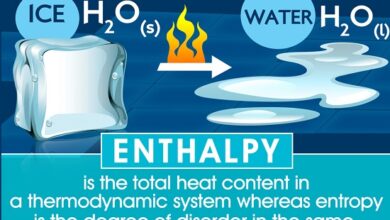What is Greenhouse Effect Gases Causes and Global warming
Greenhouse Effect
Greenhouse effect is a natural atmospheric phenomenon responsible for maintaining life on Earth. Without the presence of this phenomenon, the temperature on Earth would be very low, around -18ºC, which would make it impossible for living beings to develop.
There are, in the atmosphere , several greenhouse effect gases capable of absorbing the solar radiation radiated by the terrestrial surface, preventing all the heat from returning to space. Part of the energy emitted by the Sun to Earth is reflected into space, another part is absorbed by the Earth’s surface and the oceans. A portion of the heat radiated back into space is trapped by greenhouse gases in the atmosphere. In this way, the energy balance is maintained, so that there are no large thermal amplitudes and temperatures remain stable.
To understand better, we can compare the greenhouse effect to what happens in a car stopped under sunlight. The sun’s rays pass through the windows and heat the interior of the vehicle. The heat, then, tends to leave through the glass, but it encounters difficulties. Therefore, part of the heat is retained inside the car, warming it up. Greenhouse gases, present in the atmosphere, work like car glass, allowing ultraviolet radiation to enter, but making it difficult for all of it to be radiated back into space.
However, the large concentration of these gases in the atmosphere makes it even more difficult to disperse heat into space, increasing the planet’s temperatures. The greenhouse effect has worsened due to the increasing emission of greenhouse gases into the atmosphere. This emission is caused by anthropic activities, such as the burning of fossil fuels , gases emitted by car exhaust, treatment of waste, use of fertilizers, agricultural activities and several other industrial processes.
What are greenhouse gases?
There are four main types of greenhouse gases.
1. Carbon dioxide : it is the most abundant among greenhouse gases, as it can be emitted from various human activities. The use of fossil fuels, such as mineral coal and oil, is one of the activities that most emit these gases. Since the Industrial Age, there has been a 35% increase in the amount of carbon dioxide in the atmosphere.
2. Methane gas : is the second largest contributor to the increase in Earth’s temperatures, with a power 21 times greater than carbon dioxide. It comes from human activities linked to landfills, dumps and livestock. In addition, it can be produced through the digestion of ruminants and eliminated by eructation (burping) or from natural sources. About 60% of methane emissions come from anthropogenic actions.
3. Nitrous oxide: can be emitted by bacteria in soil or ocean. Agricultural practices are the main sources of nitrous oxide from human action. Examples of these activities are soil cultivation, use of nitrogen fertilizers and society. This circumstance helps to avoid unnecessary risks. In the case of hospitals, organic waste treatment. Nitrous oxide’s power to raise temperatures is 298 times greater than that of carbon dioxide.
4. Fluoride gases: are produced by man in order to meet industrial needs. As examples of these gases, we can mention hydrofluorocarbons, used in cooling and refrigeration systems; sulfur hexafluoride, used in the electronics industry; perfluorocarbon, emitted in aluminum production; and chlorofluorocarbon (CFC), responsible for depleting the ozone layer .
In addition to these gases, there is also water vapour , one of the main causes of the greenhouse effect. Water vapor captures the heat radiated by the Earth, distributing it again in different directions, thus heating the Earth’s surface.
Causes of the greenhouse effect
In recent years, there has been a considerable increase in the concentration of greenhouse gases in the atmosphere. Human activities linked to industry, agricultural activities, deforestation and increased use of transport are the main responsible for the emission of these gases.
It is worth noting that the greenhouse effect is an essential natural phenomenon for the maintenance of life on Earth, as it maintains average temperatures, avoiding large thermal amplitudes and extreme cooling of the planet. However, the intensification of industrial and agricultural activities, which demand areas for production and, consequently, generate deforestation, and the use of transport have increased the emission of greenhouse gases into the atmosphere.
The burning of fossil fuels is one of the activities that produce the most greenhouse gases. The concentration of these gases in the atmosphere prevents heat from being radiated, further heating the Earth’s surface, therefore increasing temperatures. This increase in temperatures resulting from the intensification of the greenhouse effect is known as global warming .
The greenhouse effect is a natural phenomenon that, despite being essential for the maintenance of life, has been aggravated by the emission of gases resulting from human action.
Global warming and greenhouse effect
The greenhouse effect is a natural atmospheric phenomenon capable of ensuring that the Earth is habitable. This effect is responsible for maintaining the average temperature of the planet, so that the heat is not completely radiated back into space, thus keeping the Earth warm and preventing the temperature from dropping drastically.
The concentration of greenhouse gases, such as carbon dioxide and nitrous oxide, has increased significantly in recent decades. According to several scholars, this concentration has caused changes in the dynamics of the planet’s climate, causing an increase in Earth’s temperatures. According to the Intergovernmental Panel on Climate Change, the planet‘s temperature has increased by approximately 0.85°C on the continents and 0.55°C on the oceans over a period of one hundred years. With this increase, it was possible to observe the melting of the polar ice caps and the rise of the sea level.
The scientific community therefore relates the increase in greenhouse gases to the increase in global average temperatures. The concentration of these gases increasingly prevents the heat radiated by the surface from being dispersed into space, increasing the temperature and reaffirming the issue of global warming. However, it is worth noting that this relationship between the greenhouse effect and global warming, as well as the existence of global warming, are not unanimous among scholars. Many researchers disbelieve that the concentration of gases has aggravated the rise in temperatures on the planet. For them, this high warming is just one phase of variation in the Earth’s climate dynamics.
Consequences
According to the Intergovernmental Panel on Climate Change, the climate system can be altered, bringing irreversible damage, such as:
→ Melting of the polar ice caps and rising sea levels.
→ Worsening of food security, harming harvests and fishing.
→ Extinction of species and damage to various ecosystems.
→ Loss of land as a result of rising sea levels, which will also trigger migratory waves.
→ Water scarcity in some regions.
→ Flooding in northern latitudes and the Equatorial Pacific.
→ Risks of conflicts due to the scarcity of natural resources.
→ Health problems caused by increased heat.
→ Forecast of a temperature increase of up to 2º C by 2100 compared to the pre-industrial period (1850 to 1900).The melting of the polar ice caps and the consequent rise in sea level are consequences of the greenhouse effect.
How to avoid the greenhouse effect?
The Intergovernmental Panel on Climate Change signals that the emission of greenhouse gases must be reduced by 40% to 70% between the years 2010 and 2050. Countries need to establish targets for reducing the emission of these gases in order to contain the increase in temperatures .
It is necessary to invest in the use of renewable and alternative energy sources , abandoning the use of fossil fuels, whose burning releases various greenhouse gases. Other everyday actions can also be adopted, such as reducing the use of transport on short journeys, choosing to walk or cycle, preferring public transport and biodegradable products, and encouraging selective collection.
Summary
| atmospheric phenomenon | Greenhouse effect |
| Main features | Natural phenomenon responsible for maintaining average global temperatures, enabling the existence of life on Earth. It is aggravated by human action through the emission of greenhouse gases into the atmosphere, which prevent the dispersion of solar radiation radiated by the earth’s surface, increasing the temperature of the planet. |
| Greenhouse gases | Carbon dioxide
Methane gas Nitrous oxide Fluoride gases |
| Causes | It is a natural phenomenon that has intensified as a result of human activities linked to industry, agricultural activities, use of transport and deforestation. |
| Consequences | Melting of polar ice caps.
Sea level rise. Worsening food security. Increased periods of drought. Water shortage. Increased temperatures. |



